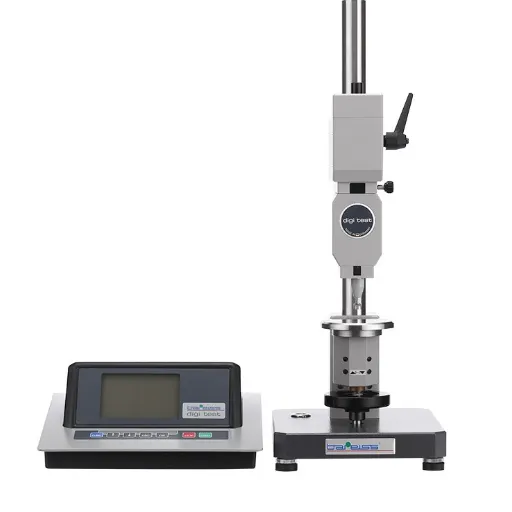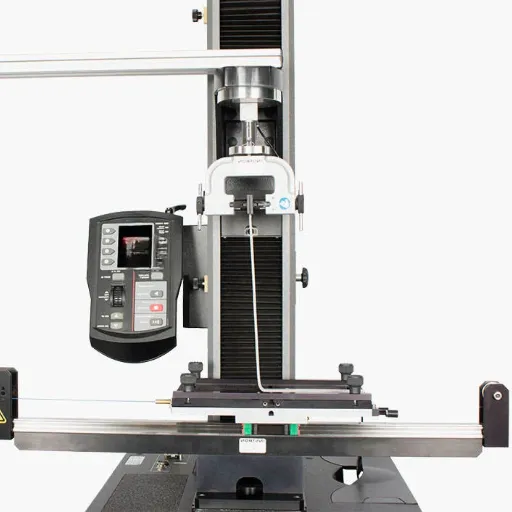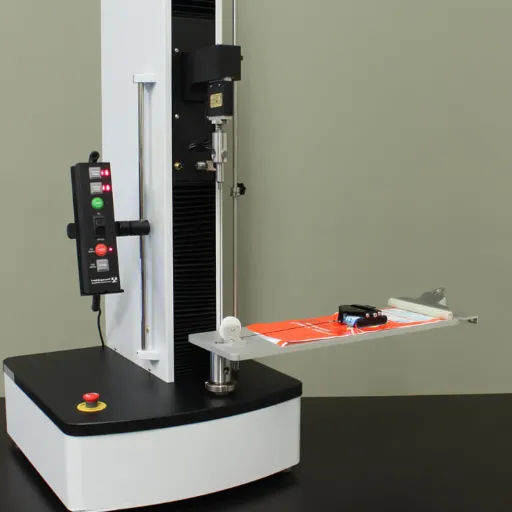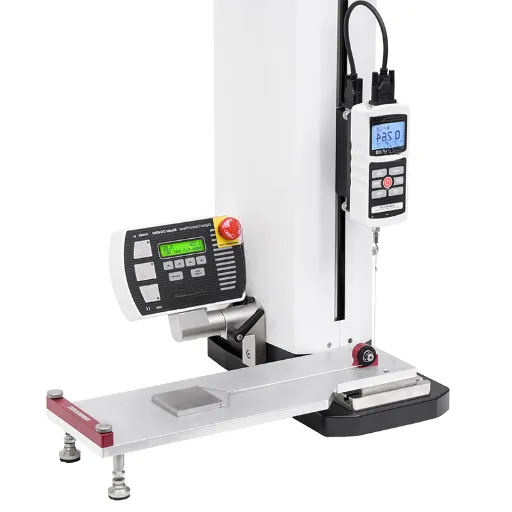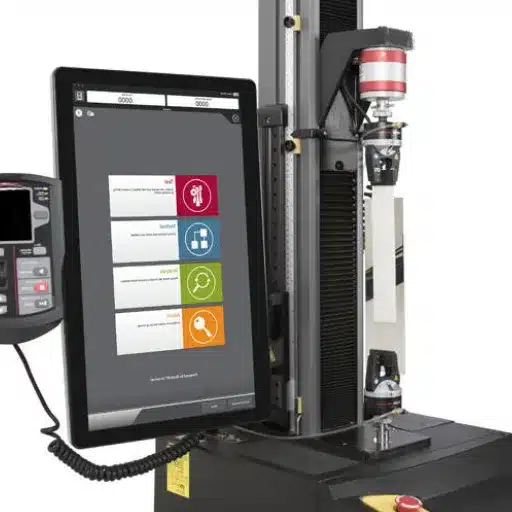Across a very wide industry base, rubber is a necessary asset for the automotive, aviation, healthcare, or consumer goods industry. Some of its unusual properties include flexibility, durability, and resistance under extreme conditions, which in turn makes it difficult to apply for various usage areas. How do we find out whether rubber materials are adaptable to stringent evolving performance requirements down into varied uses? That will be the first topic this blog discusses: entering fascinating materials testing for rubber, including rubber test methods and advanced instrumentation to assess rubber quality and functionality. This guide will provide rubber manufacturers, engineers, and researchers with useful information on the processes for ensuring that rubber materials are effectively and consistently functioning in their intended applications. So, fasten your seatbelt and discover the science behind this versatile material and the testing regimes that keep industries rolling.
Overview of Rubber Material Testing
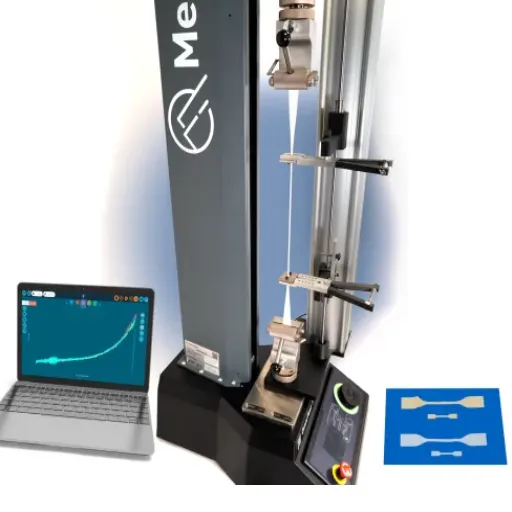
Importance of Rubber Testing in Industry
Rubber testing is essential to ensure the quality, durability, or reliability of materials in numerous applications across various industries. From automotive, aerospace, and healthcare to construction, rubber is used in countless applications. Testing safeguards a rubber from failing in its duties by making sure it met the specifications of product wear, flexibility, etc., while assuring safety.
Testing consists of analyzing rubber physical and chemical parameters to detect any weak points and improve the rubber to fit into the rigorous industry specifications. For instance, through heat resistance tests, chemical compatibility tests, and elasticity tests, manufacturing ensures that the rubber has the ability to perform well under actual conditions that the rubber will be subjected to. Such preventive testing reduces risks, allows savings in terms of defect issues, and enhances customer satisfaction.
Rubber testing promotes innovation as it allows engineers and researchers to create new compounds with a higher level of performance. From having a rubber material that may have superior resistance toward environmental conditions to one optimized for lightweight applications, testing definitely directs advancements that keep the industry moving forward. Finally, rubber testing assures that the material can reliably bear all the requirements necessary to maintain the integrity and safety of products in use all around the world.
Types of Rubber Materials
The following are the major categories of natural and synthetic rubber materials. Natural rubber is derived from latex of rubber trees, having large elasticity, resilience, and abrasion resistance. Since it has poor heat and chemical resistance, it is not always applicable. These are therefore used in tires, footwear, and industrial purposes.
Conversely, synthetic rubber is produced industrially by chemical processes and offers a wide array of properties adaptable to fulfill any given requirement. Nitrile rubber, for example, stands resistant to oil and fuels so that it would be used in automotive and industrial-type sealing needs. In the same way, silicone rubber is used where heat resistance and electrical insulation properties are of utmost importance.
Natural Rubber
- Derived from latex of rubber trees
- Large elasticity and resilience
- Good abrasion resistance
- Poor heat and chemical resistance
- Used in tires, footwear, industrial applications
Synthetic Rubber
- Produced industrially by chemical processes
- Wide array of adaptable properties
- Nitrile rubber: oil and fuel resistant
- Silicone rubber: heat resistant, electrical insulation
- Customizable for specific requirements
Various rubber materials have unique properties that make them suitable for particular applications. The identified rubber type shall depend on various factors like environmental conditions, mechanical stress, and chemical exposure. Such versatility makes rubber materials indispensable to many industries, including automotive manufacturing, healthcare, and consumables.
Applications of Rubber Parts
Rubber parts find an extensive area of application where flexibility, durability, and environmental resistance are pre-requisites. The automotive sector uses rubber to manufacture tires, seals, gaskets, and hoses, essential for assuring the safety and performance of vehicles. Such components guarantee sealing and cushioning under conditions of high temperatures, dynamic movements, etc.
“Use of rubber material is very necessary for the medical application industry in producing medical devices like syringes, surgical gloves, and equipment seals. These materials are biocompatible, resistant to many chemicals, and good under sterilization, all of which make them highly invaluable in maintaining hygiene and patient safety.”
In addition to being categorized as a consumer good, products with rubber components include footwear, kitchen appliances/glassware materials, and adhesives. Rubber’s natural elastic character allows a product to age properly and be a fully utilizable object throughout its life. Various applications highlight rubber materials in manufacturing, where their flexibility allots differing stresses and environmental conditions, reflecting the industry’s and everyday use on a commercial level today.
Rubber Test Methods
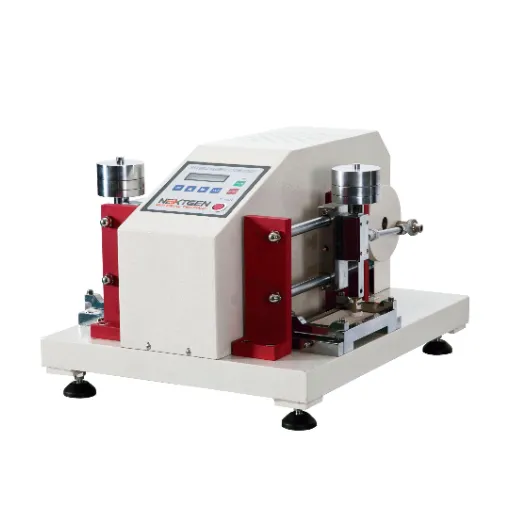
ASTM Standards in Rubber Testing
ASTM standards play a significant role in guaranteeing the quality and reliability of rubber products. These standards specify uniform tests for rubber properties such as tensile strength, elongation, compression, and resistance to aging. Following these guidelines, manufacturers make sure the rubber meets industry criteria and renders the performance it is designed for when used in varied conditions.
| ASTM Standard | Test Purpose | Key Measurements |
|---|---|---|
| ASTM D412 | Tensile strength and elongation at break | Force bearing capacity, stretch distance |
| ASTM D2240 | Rubber hardness measurement | Resistance to deformation under pressure |
One of the most commonly used standards is ASTM D412, which is concerned with determining the tensile strength and elongation at break of rubber materials. This method considers how much force a specimen of rubber can bear before breaking and how far it can stretch, thus ensuring its suitability for the end purpose. Similarly, ASTM D2240 is frequently involved in ascertaining rubber hardness using a durometer. This gives an idea about the resistance of the material to deformation under pressure.
These standards ensure consistency in products and safety, as well as allow comparative studies on the properties of rubberic materials. Adhering to the ASTM standards, manufacturers thus develop well-classed rubber goods as per regulatory and customer expectations. The implementation of standard ASTM procedures eventually guarantees efficiency, at least by eliminating defects and fostering innovations in rubber technology.
Physical Testing Methods
Physical tests of rubberic materials are carried out to explore tensile strength, elasticity, hardness, and compression set. These tests become paramount to certify that the material adheres to given performance demands and standards. Typical tests under this category embrace tensile, hardness, and compression testing.
Tensile Testing
Observes behavior under loading including ultimate tensile strength, elongation at break, and modulus. Provides information about durability and flexibility for stretching applications.
Hardness Testing
Measures material’s resistance to deformation using Shore hardness scale. Essential for determining suitability for specific applications requiring certain stiffness levels.
Compression Set Testing
Determines material’s recovery ability after compression. Useful for examining resilience capacity in sealing and cushioning applications.
Under tensile loading, one observes the behavior with respect to properties such as ultimate tensile strength, elongation at break, and modulus of the material. This test gives preliminary information on the expected behaviour of the material if it is used in situations where it will be stretched or pulled apart from another substance, determining the durability and flexibility required by the end application.
Hardness testing is a method used for measuring a material’s resistance to deformation, usually conducted by following established techniques such as the Shore hardness scale. Compression set testing determines the material’s recovery ability after compression and so is useful in examining its resilience capacity and appropriateness in applications like sealing and cushioning. Together, these physical tests confirm that rubberic products fulfill the demanded reliability and performance needed in various industries.
Compression Set Testing Procedures
Compression set testing is a method to evaluate the capacity of material, usually rubber or elastomer, to retain its original thickness after being subjected to a compressive load for a given period. In coming to this, resilience of the materials and their function as the ability to maintain their shape in applications like seals, gaskets, and cushioning components are measured.
Testing Procedure Steps:
- Place the sample under constant compressive force or deformation
- Expose to controlled environment (elevated temperature) for specified period
- Allow recovery of the sample after testing duration
- Calculate compression set as percentage deformation remaining
- Compare original thickness with thickness after recovery
The procedure usually entails placing the sample under a constant compressive force or deformation and exposing it to the controlled environment, such as one involving an elevated temperature, for the specified period. After the testing duration, another step allows recovery of the sample. The compression set is regarded as percentage deformation still remaining after removal of the force and is calculated by comparison of the original thickness of the sample with the thickness after recovery.
This test is instrumental in understanding the resistance and performance of materials under working, real-time conditions. Materials with low compression set are suited to applications requiring longevity and shape retention; conversely, materials with a high compression set might not qualify. Following standardized procedures such as ASTM D395 or ISO 815 helps producers and engineers give a guarantee to the quality and dependability of materials for different industrial applications.
Mechanical Properties of Rubber
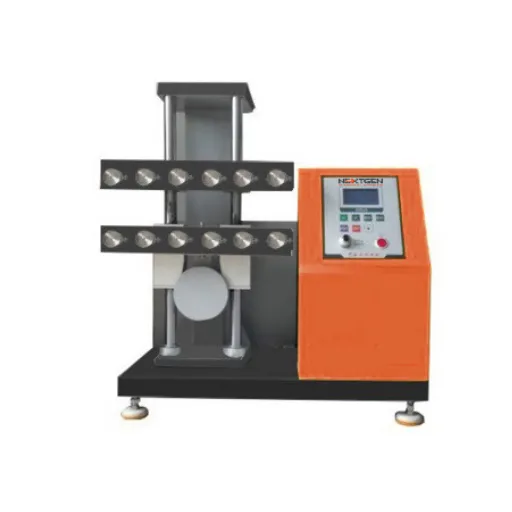
Hardness Testing Techniques
The hardness test method is crucial to determine a rubber’s mechanical properties as it looks into the rubber’s ability to resist forces of deformation applied at a point. Hardness-based tests check a variety of factors that influence rubber durability and performance for various applications. The most common techniques to measure rubber hardness include the Shore durometer method and the IRHD method.
Shore Durometer Method
Uses Shore durometer device to force indenter into rubber specimen with standard force. Measures shore hardness on scale (Shore “A” or “D” for different material stiffness).
Higher number = harder material with more deformation resistance
IRHD Method
Measures depth of impression made by rounded standardized indenting device. Applies smaller force for longer period to maintain consistency.
Especially reliable for quality control in industries requiring consistent material properties
The Shore durometer test relies on a Shore durometer device to force a particular indenter into the rubber specimen with a standard force. Depending on the stiffness of the rubber, the Shore durometer meters a shore hardness on a scale usually classified as Shore “A” or Shore “D” for softer and harder materials. A larger number means the material is harder, i.e., resisting deformation more.
Besides, the IRHD test is used to determine the hardness of rubber by measuring the depth of the impression made by a rounded standardized indenting device. Contrary to the Shore, the IRHD applies a smaller force for a longer period to maintain consistency of results. This method is especially reliable from a quality-control standpoint in industries wherein consistent material properties are required so that operator variability may never clog inconsistencies into the measurement. And as a result, these methods combine to facilitate the measurement of rubber hardness by manufacturers and engineers so that it can then be tested for suitability in its specific applications.
Tear Resistance Assessment
Tear resistance is an important rubber property that indicates how much force is needed to rip or tear the rubber. In applications subjected to more severe stresses, this property becomes even more important since it affects their durability and performance. Knowledge of tear resistance helps in creating better and reliable products for the automotive, aerospace, and construction industries.
Testing Process:
- Cut rubber sample into standardized specimen shape (Crescent or Trouser specimens)
- Apply well-categorized force to propagate tear through specimen
- Measure force required to prevent or extend tear initiation
- Analyze data for material’s mechanical capacity under strain
Tear resistance testing usually involves cutting a rubber sample into an International standardized specimen of a given shape, either Crescent or Trouser specimens. With a well-categorized force, a propagation tear travels through the specimen. This force is measured to prevent, or to extend, the initiation of the tear. This test gives useful insight and data to those engineers and manufacturers concerning the rubber’s mechanical capacity when under strain, thus helping them with their choice of material for a particular use.
Tear resistance is taken into consideration during the product life cycle not just for performance reasons but also for safety and cost. If a rubber product is capable of resisting the expected tear forces, it will most likely never prematurely fail, and thus the costs associated with early failure decrease. The use of these tests increases reliability and hence customer satisfaction; tear resistance should, therefore, be considered an important part of testing for rubber materials.
Compression Set Analysis
Compression set analysis acts as an important test to determine how a certain type of rubber can maintain its elasticity and shape when subjected to compression under stipulated conditions for some time. This test allows one to foretell and take into consideration how well the material can hold over the long period, when subjected to forces causing deformation, thus being much more crucial in applications requiring maintenance of shape and elasticity.
This standard test occurs by placing a rubber specimen between parallel plates or some other fixture, setting the rubber under constant strain at an established temperature for a determined duration. Once the set time is complete, the item is freed, and the amount of its retained deformation is measured. The lower the number in compression set percentage, the more elastic the material: that is, it goes back almost to its original dimensions.
Key Benefits:
Low Compression Set Materials: Retain sealing capacity better, reduce chances of failure, essential for reliability and durability in high-performance applications.
Compression set analysis aims at checking whether a rubber material is suitable for an application in seals, gaskets, or any physical component exposed to repetitive compression forces. Materials having a low compression set retain their sealing capacity better and thus reduce the chances of failure; such rubber is necessary in industries where reliability and durability are critical. Ultimately, this analysis helps in choosing and verifying rubber for demanding, high-performance, and better-lifetime applications.
Chemical and Resistance Testing
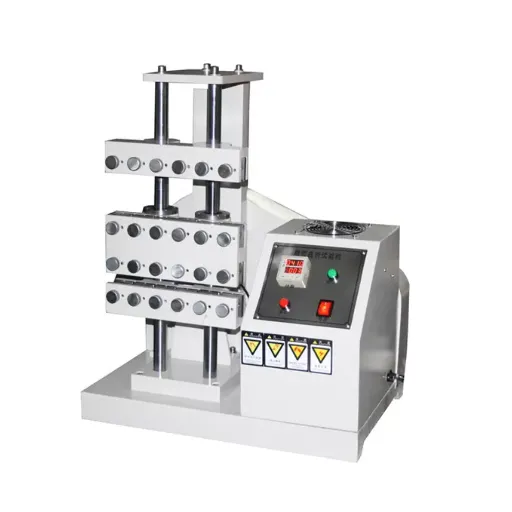
Chemical Analysis of Rubber Materials
Chemical analysis of rubber material is essential so that it may be fit for its intended application or environment. This analysis provides information on the chemical constitution of rubber: the polymers, additives, and fillers used in its formulation. Engineers and manufacturers, knowing what the material is composed of, may reasonably expect how it is going to behave under certain conditions, such as heat, chemicals, or physical stress.
FTIR Spectroscopy
Detects specific functional groups in rubber compounds through infrared analysis
TGA Analysis
Provides thermal stability information and organic/inorganic content amounts
Gas Chromatography
Used in combination with other methods for better material characteristic interpretation
This chemical analysis may be performed by spectroscopy, including FTIR, which is used to detect certain functional groups in the rubber. Another method is by thermal analysis-TGA, which gives information about thermal stability and the amount of organic/inorganic present. Other testing methods may be used in combination with the above for better interpretation of the material characteristics, such as gas chromatography.
Analyzing chemical data provides key information related to product quality, compliance to industrial standards, and reliability of performance. Testing can be an indicator to know whether a rubber material is resistant enough to heat or chemicals-or neither. Such properties are required for automotive or industrial applications. With adequate information about material composition, manufacturers may now be able to decide which rubber would work best for their application.
Chemical Resistance Testing Methods
Such chemical resistance tests are very important for understanding the behavior of rubber materials when exposed to different chemicals. Two common testing methods are immersion and tensile strength. These processes may be used to identify the suitability of work-related materials in industrial and automotive applications.
Immersion Test
- Places rubber sample into chemical fluid for predetermined period
- Records alterations in weight, volume, and appearance
- Examines rubber reactions to chemicals over long periods
- Provides information about swelling, degradation, or physical property changes
Tensile Strength Test
- Exposes specimens to chemicals first
- Evaluates ability to withstand stretching/pulling forces
- Determines if rubber maintains structural integrity under chemical influences
- Essential for mechanical applications requiring durability
An immersion test consists of placing the rubber sample into the chemical fluid for a predetermined period. Upon exposure, alteration in the weight, volume, and appearance of the rubber are recorded. Such a test is very useful in examining the reaction of rubbers to chemicals over long periods. It provides information about swelling, degradation, or any other changes in physical properties.
Chemical effects on rubber are one of the applications tested for tensile properties. The specimens are first exposed to a chemical, followed by a tensile strength test which evaluates the ability of the material to withstand stretching or pulling forces. This technique determines whether the rubber structurally maintains itself under chemical influences; hence, it becomes essential when mechanical application requires durability. Together, these methods aid manufacturers in selecting the best-performing materials in a demanding environment.
Impact of Environmental Factors on Rubber Performance
Rubber performance is strongly dependent on extrinsic factors such as temperature, UV radiation, moisture, and chemical exposure. Extremely low or high temperatures can make the rubber hard, elastic, or brittle, thereby rendering it incapable of doing its intended work effectively. If exposed for prolonged periods, UV radiation can degrade the rubber composite, leading to surface cracks or discoloration as time passes.
| Environmental Factor | Impact on Rubber | Mitigation Strategies |
|---|---|---|
| Temperature Extremes | Causes hardening, loss of elasticity, or brittleness | Temperature-resistant formulations |
| UV Radiation | Degradation, surface cracks, discoloration | UV stabilizers, protective coatings |
| Moisture | Swelling, softening, loss of mechanical properties | Moisture-resistant compounds |
| Chemical Exposure | Softening, tensile strength loss, degradation | Chemical-resistant materials, barriers |
Moisture has an important influence on rubber age life. High humidity or water contact will make it swell through softening and, lastly, loss of mechanical properties. Places where rubber keeps being subjected to chemicals like oils, acids, or solvents may soften it, give ways, slip away from tensile strength, or another form of degradation. These environmental stressors will relate differently to a particular kind of rubber and composition.
Another method of mitigating these effects is the addition of protective additives or surface coatings. Also, select the best materials to be used in a particular application in order to ensure long-term performance. Regular maintenance coupled with monitoring under heavy-duty conditions would increase the life of rubber parts. By solving these environmental challenges, high-performance rubbers can retain their physical integrity and functionality in heavy-duty applications.
Advancements in Rubber Testing Instruments
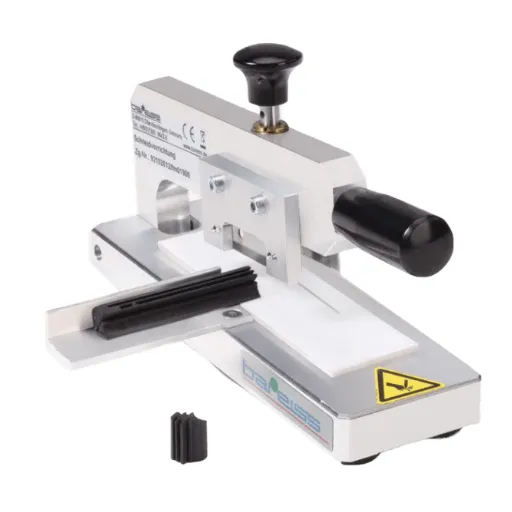
Integration of Automated Testing Systems
Automated systems have revolutionized the work of testing rubbers by improving the efficiency, accuracy, and consistency of the results. The human agent will be eliminated by customizing the set of processes so that data collecting is done automatically and with a lesser degree of variability in manual operations. Since most laboratories have repetitive tasks, automating them speeds up testing for critical parameters that include tensile strength, elasticity, and abrasion resistance, all of which determine the performance of rubbers under different circumstances.
Advantages of Automation:
- Improved Efficiency: Handles multiple tests simultaneously
- Enhanced Accuracy: Eliminates human variability and errors
- Consistent Results: Standardized processes ensure reliability
- Faster Testing: Speeds up critical parameter evaluation
- Data Management: Automated data collection and analytical reports
The other said great advantage of these automation systems is in meeting huge-scale testing requirements. The advanced software can handle several tests at the same time, work with full datasets, and come up with analytical reports within pretty much less time. This is more especially relevant in industries where being able to make a quick test tune directly translates into fines for materials or factory standards in merging production schedules.
Moreover, the automation greatly facilitates the simulation of real-world conditions with operative precision. Testing apparatuses bearing programmatically controlled interfaces mimic environmental factors such as oscillating temperature, variable humidity levels, and mechanical stress. Therefore, with such systems in proper place, rubber materials would be truly tested for heavy-duty application in terms of strength and life. Automated Testing Systems pave the road in helping the rubber products achieve a higher level of quality and the working efficiency of operations.
AI-Driven Analysis in Rubber Testing
AI-driven analysis has revolutionized rubber testing by instilling precision, speed, and consistency in the process of evaluations. AI tools take up the analysis of an extensive amount of data generated in the test procedure, finding patterns and anomalies which conventional methods would otherwise miss. This way, AI helps in identifying flaws or weaknesses in rubber materials at an early stage so that these can be fixed, hence, ensuring that the products are dependable and durable.
Pattern Recognition
AI analyzes extensive test data to find patterns and anomalies that conventional methods might miss, identifying flaws early for reliable products.
Predictive Analysis
Machine learning algorithms predict behavior and lifespan under different conditions, simulating long-term effects in minutes.
Quality Assurance
Automates repetitive tasks, reduces human error, ensures adherence to testing protocols with accurate result recording.
However, when it comes to rubber testing, prediction is one of the prime features offered by AI. Machine learning algorithms allow for predicting the behavior and lifespan of rubber products under different conditions. Alongside processing historical and real-time data, an AI system simulates the effects of long-term wear and tear within a few minutes, thus letting companies make the necessary adjustments to the formula or design of their products beforehand.
Meanwhile, AI-based systems help with quality assurance by automating repetitive tasks and curbing human error. Such systems make sure that the testing protocols are adhered to and that the results are correctly recorded. By applying insights and data to automation, AI improves efficiency while ensuring zero compromise on quality standards in processes of rubber manufacturing and testing.
Future Trends in Rubber Material Testing
With technological advancements and an increasing emphasis on sustainability, the future trends in rubber material testing are being strategically shaped. Accelerated and precise results from next-generation testing methods rank among the developments. Non-destructive testing methods are fast becoming popular in testing the performance and durability of rubber materials without affecting the sample’s integrity. Such methods minimize waste, thus saving time and money, marking them as a sustainable approach for the industry.
Emerging Trends:
- Non-Destructive Testing Methods: Test performance without affecting sample integrity
- AI and Machine Learning Integration: Analyze complex datasets for accurate predictions
- Green Testing Practices: Eco-friendly methods and materials
- Renewable Testing Materials: Biodegradable alternatives for sustainable manufacturing
- Real-time Monitoring Systems: Continuous performance assessment
In the present era, the use of AI and machine learning in analyzing complex datasets that are generated during testing processes has become an up-and-coming trend. These technologies allow manufacturers to predict performance with utmost accuracy by detecting patterns and examining in-depth behaviors of materials under different conditions. AI-driven testing systems further aid in ensuring high-quality standards by detecting defects and anomalies, thereby reducing the chances of failure in the end products.
To add more, the whole industrial domain is moving toward green practices in rubber material testing. These efforts involve eco-friendly testing methods and materials to reduce testing impact on the environment. The researchers are delving into renewable and biodegradable testing materials, helping in that big picture of sustainable manufacturing. Allied together, these developments assure that the future of rubber material testing will be efficient, reliable, and green.
Frequently Asked Questions (FAQ)
Q: What is rubber testing?
A: Rubber testing refers to the procedures undertaken to evaluate the physical and chemical properties of rubber compounds. This testing is necessary to give assurance of the rubber product’s performance in its intended application.
Q: Why are the characteristics of rubber important?
A: The characteristics of rubber, such as elasticity, durability, and resistance to environmental factors, are essential for determining suitability for a particular use. Such knowledge guides material selection and completes the industry’s standard in rubber products.
Q: What is a moving die rheometer?
A: The special equipment employed during the rubber testing to perform measurements of rheological parameters of rubber compounds, viscometry, and flow studies, so as to infer the response of these materials during processing and performance under different conditions.
Q: What are the standard conditions of testing in rubber testing?
A: Conditions of testing in rubber testing usually vary greatly and sometimes include temperature, humidity, and pressure controls. These conditions are actually necessary so that one can accurately test the performance of the rubber material, as well as reliable and reproducible results.
Q: What are aging tests in rubber testing?
A: Aging tests check the deterioration of different rubber compounds as a result of the factors of the environment, i.e., heat, ozone, and UV light. These types of tests are usually performed for ensuring long-term safety and performance of rubber products.
Q: How does a Mooney viscometer operate?
A: A Mooney viscometer measures the viscosity of rubber compounds by applying shear forces to the sample under controlled conditions. The test is one of the main methods used for testing the processability of rubber materials and their behavior in mixing and curing.
Q: What is the importance of testing services in the rubber industry?
A: The testing services serve as aids in the rubber industry by performing required tests on rubber and elastomeric materials, depending on the relevant standard, to assist manufacturers in developing products for practical end-use applications.
Q: What does the term “scorch time” mean in rubber testing?
A: Scorch time is, in a way, the time during which a rubber compound cannot be cured and, thus, very much necessary to process it effectively so that it does not cure prematurely. The knowledge of this time is, therefore, useful to the manufacturers in planning their production processes and avoiding defects.
Q: How do accelerated aging tests differ from regular aging tests?
A: Through accelerated aging tests, long-term aging effects are studied in a short span by exposing rubber materials to much harsher conditions, so aging can be assessed quickly together with material degradation and the long-term safety of the rubber products.
Q: How does shear affect rubber testing?
A: Shearing is caused by the forces that act upon rubber materials during processing and testing. Shear testing of rubber compounds usually provides a better evaluation of their real-life performance, especially where high stress areas are involved.
References
- 1
Dielectric High Voltage Rubber Testing – A certified rubber testing lab that adheres to ASTM and ANSI standards for dielectric high voltage testing.
- 2
MonTech Rubber Testing Solutions – Offers traceable calibration services and advanced rubber testing solutions.
- 3
Rubber Material Testing and Molded Rubber Products – Rubber Group – Focuses on evaluating the properties and characteristics of elastomers and polymers.
- 4
Understanding Rubber Testing Methods – Prescott Instruments – Provides a comprehensive guide to 7 major areas of rubber testing, including 30 individual test methods.
- 5
Rubber Test Types – TA Instruments – Features a wide array of tests for measuring the rheological and physical properties of rubber and polymers.

